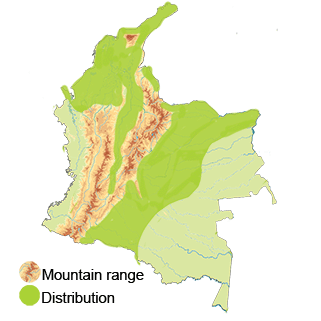White-tailed Kite
The White-tailed Kite (Elanus leucurus) Read in Spanish
Appearance: The White-tailed Kite is a slender, long-winged raptor with a predominantly white plumage. It has striking black shoulder patches, as well as black wingtips and tail. The eyes are red, and the bill is dark. It has a distinctive hunting behavior of hovering over open areas while searching for prey.
Habitat: White-tailed Kites are commonly found in open habitats such as grasslands, marshes, fields, and savannas. They are often seen perched on elevated structures like trees or utility poles where they scan the ground for prey.
Behavior: These kites are known for their hovering flight behavior as they hunt for small mammals, birds, insects, and reptiles. They are often seen hunting by swooping down to catch prey on the ground. White-tailed Kites are typically solitary or found in small family groups.
Breeding: White-tailed Kites usually nest in trees, bushes, or sometimes even on the ground. They build simple nests made of sticks and grass. The female usually lays a clutch of 3-5 eggs, and both parents participate in incubating the eggs and raising the chicks.
Conservation Status: In Colombia, the White-tailed Kite is generally considered to be of least concern in terms of conservation status.
Distribution
The White-tailed Kite (Elanus leucurus) is a small raptor known for its distinctive hovering behavior while hunting for prey.
Andean Region:** The White-tailed Kite can be found in various parts of the Andean region of Colombia, including areas along the eastern slope of the Andes and in the central Andes. Departments such as Cundinamarca, Boyacá, and Antioquia are known to host populations of White-tailed Kites in Colombia.
Caribbean Region: Some parts of the Caribbean coast and nearby areas in Colombia, such as the departments of Atlántico, Bolívar, and Cesar, also provide suitable habitat for the White-tailed Kite. Open grasslands, wetlands, and agricultural areas in these regions attract White-tailed Kites for hunting opportunities.
Orinoquia Region: The vast savannas and wetlands of the Orinoquia region in eastern Colombia, including departments like Casanare, Meta, and Vichada, serve as important habitat for the White-tailed Kite. These open landscapes with scattered trees and grassy plains are favored for hunting by this bird of prey.
Taxonomy
The White tailed Kite (Elanus leucurus)
- Kingdom: Animalia
- Phylum: Chordata
- Class: Aves (Birds)
- Order: Accipitriformes
- Family: Accipitridae
- Genus: Elanus
- Species: Elanus leucurus
Vocalization
The White-tailed Kite (Elanus leucurus)
- Whistles: White-tailed Kites are known to produce clear, high-pitched whistles that are often used as contact calls between mates or family members. These whistles can vary in pitch and intensity and are believed to help maintain communication within the nesting pair and during hunting activities.
- Chirps and Chatters: White-tailed Kites may also emit soft chirping or chattering sounds, which are used for intra-species communication. These calls can be heard during courtship displays, territorial interactions, or while interacting with their young.
- Squeals and Screaming Calls: During territorial disputes or in response to perceived threats, White-tailed Kites may emit sharp squeals or screaming calls. These vocalizations serve as warning signs to deter potential intruders or predators from their territory.
- Mewing Sounds: White-tailed Kites occasionally produce mewing sounds that are similar to those of a cat. These mewing calls are thought to be part of their communication repertoire, possibly used during courtship displays or as a way to indicate their presence to other kites in the area.
- Silent Flight: While the White-tailed Kite does vocalize on various occasions, it is also known for its stealthy hunting behavior, which includes hunting prey in silence. Their ability to hover effortlessly while scanning the ground for prey is a notable feature of their hunting strategy.





